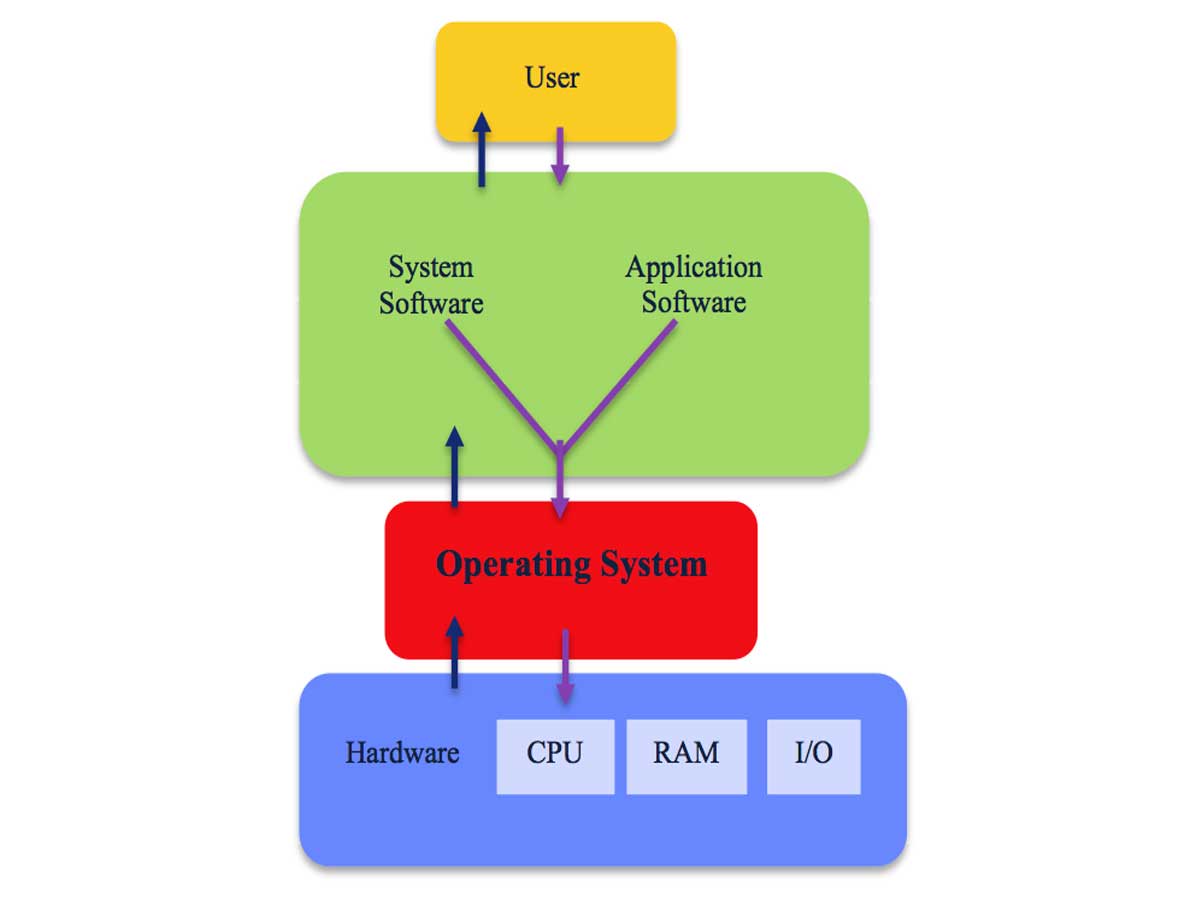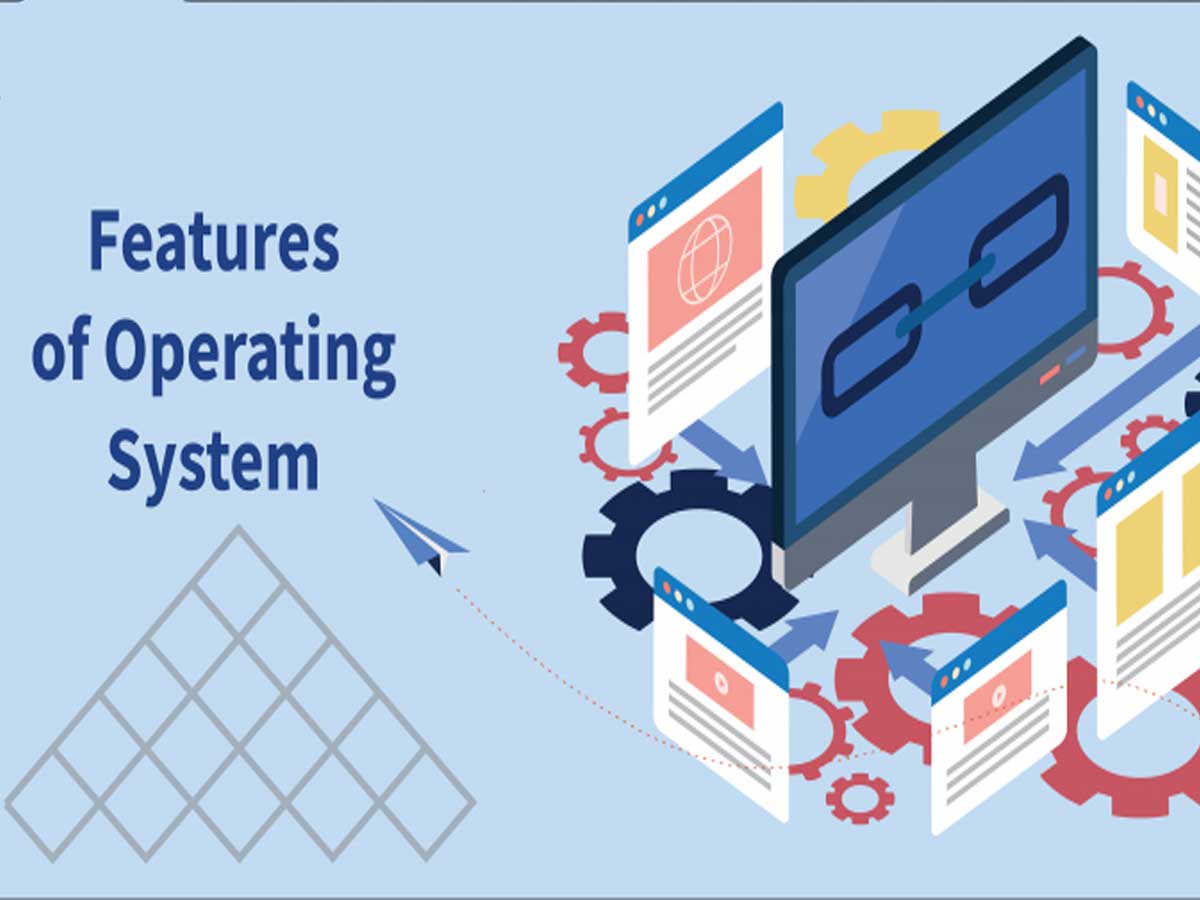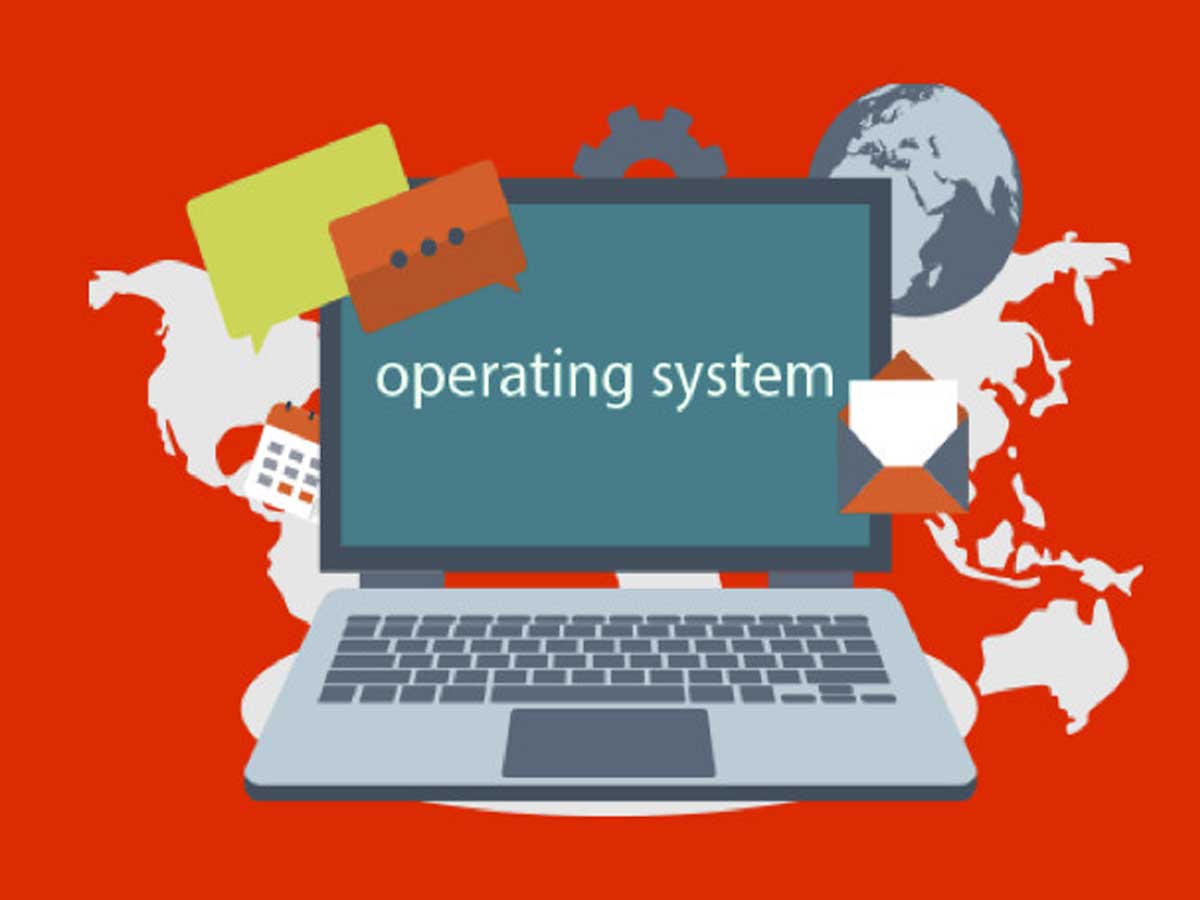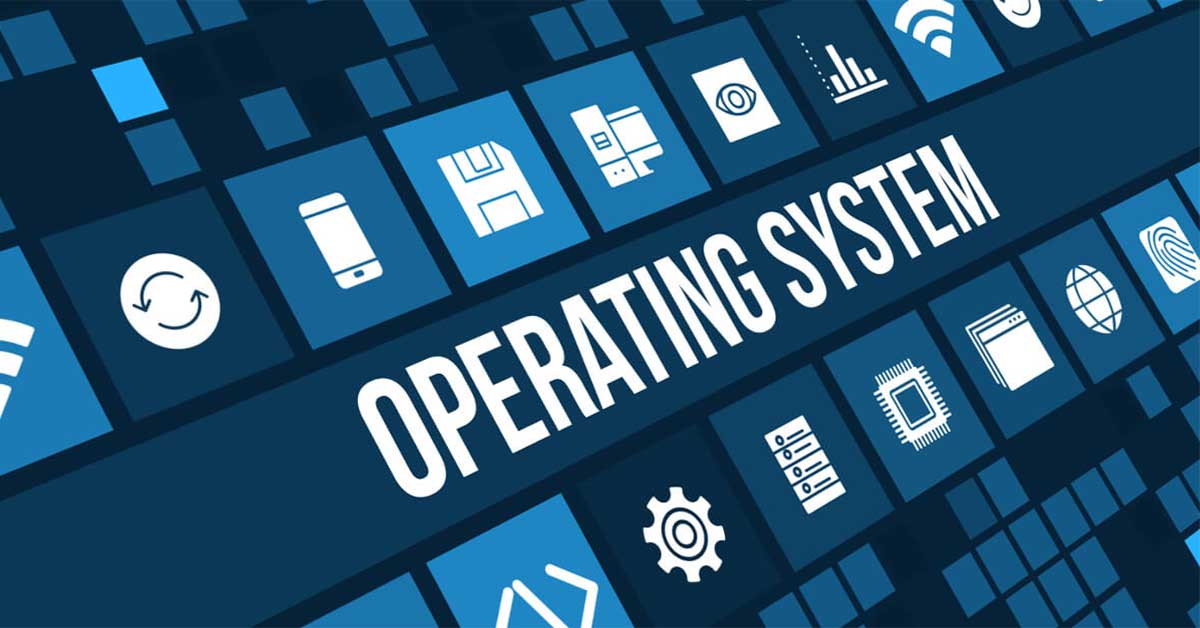Picture a universe devoid of operating systems—where computers fend for themselves, grappling with overseeing their resources and establishing meaningful connections with users. Fortunately, we need not inhabit such a realm of disorder and ineffectiveness. Instead, operating systems, the unsung champions of the digital domain, toil tirelessly behind the curtain to ensure our computers operate seamlessly and effortlessly. From governing the CPU and memory to facilitating the storage of files, managing input/output tasks, and enabling network connectivity, operating systems play a central role in harmonizing the intricate interplay between computer hardware and software. Brace yourself for an immersive journey into the realm of computational prowess as we embark on unraveling the enigmatic world of operating systems!
What is an Operating System?

Operating systems (OSs) play an indispensable role in computer life by allocating resources among various programs running, like an orchestrator coordinating all parts of its orchestra CPU, computer memory, file storage space, input/output devices (I/Os), network connections, et cetera. Their primary role is managing these essential resources ensuring optimal utilization. Operating systems may even play the part of network connections!
Operating systems perform invisibly behind the scenes, performing numerous administrative duties with great diligence. From scheduling resources in order to avoid clashes between programs to making sure each one receives all its needed resources for optimal performance, they even run until your computer shuts off! Operating systems serve as the backbone of computers by providing users with seamless interaction and the smooth implementation of software applications on computers.
Administering Computer Resources
Operating systems' primary responsibility lies in efficiently overseeing all of the resources a computer possesses, from CPU, computer memory (RAM), file storage systems (hard drives or solid-state drives), I/O devices such as keyboards, mice, and printers to network connections.

Management of resources is of critical importance in order to facilitate harmonious coexistence and operation among programs and users without interruptions or breakdowns. For example, an operating system typically plays the lead in allocating CPU power. Each process or task gets allocated limited processing power in accordance with fairness and optimal performance considerations. Furthermore, several scheduling algorithms help determine the execution order of processes to maximize overall system efficiency and ensure optimal efficiency of operation.
Memory management is another integral role of an operating system, where it oversees memory allocation to different programs without infringing upon each other's allocated memory space. Through cutting-edge techniques such as virtual memory allocation, operating systems create the illusion that each program has dedicated memory space while making efficient use of physical resources available to them.
Crucial Functions of Operating Systems

A. Orchestrating Process Management
Within the intricate realm of computer systems, operating systems assume a critical role in managing processes. They are the conductors of this digital symphony, overseeing the execution and scheduling of processes to ensure optimal efficiency and timely completion. By employing a diverse range of scheduling algorithms, the operating system determines the order in which processes are executed, effectively harnessing the power of the CPU. Furthermore, it carefully manages the allocation of CPU time to each process, allowing them to progress while ensuring a fair distribution of resources among competing tasks.
B. Ensuring Effective Memory Management
Efficient memory management stands as another pivotal function performed by operating systems. It shoulders the responsibility of allocating and deallocating memory to different programs and processes. Through the meticulous allocation of memory blocks and vigilant tracking of their usage, the operating system guarantees that programs have the necessary memory space to execute their tasks seamlessly. Additionally, it harnesses the power of virtual memory, expanding the address space available to programs. This ingenious technique safeguards programs from interfering with one another, granting them the illusion of accessing a larger memory space than the physical constraints permit.
C. Governing File Management
Operating systems play an indispensable role in establishing order within the realm of files and directories. They serve as custodians of the data, providing a structured and organized system for storage and retrieval. Navigating through the file system's hierarchical structure, users can effortlessly locate and retrieve their desired information. Moreover, the operating system assumes the responsibility of governing critical file system operations, such as creating, deleting, and modifying files, thereby safeguarding data integrity and ensuring security. Additionally, it exercises control over file permissions, dictating the read, write, and execute privileges bestowed upon specific files for users or processes.
D. Facilitating Seamless Device Management
Interfacing with a diverse array of input/output (I/O) devices constitutes yet another foundational task undertaken by operating systems. The operating system serves as the vital intermediary between applications and the I/O devices, skillfully facilitating the exchange of data. It takes charge of managing the intricate communication protocols and drivers required to establish harmonious interaction between the computer and peripherals such as keyboards, mice, printers, and storage devices. Furthermore, the operating system expertly handles input and output operations, ensuring the smooth flow of data between the computer and external devices. Whether it involves retrieving data from a storage device or transmitting data to a printer, the operating system ensures that these processes occur seamlessly, maintaining the continuity of operations.
Unraveling the Evolution of Operating Systems

First Generation (the 1940s to early 1950s)
In the nascent stages of computing, operating systems were nonexistent. Computers of this era were left to fend for themselves, lacking the guiding hand of an operating system. Programmers grappled with the daunting task of writing code in absolute machine language, where instructions were directly inputted as binary values. Each program had to be painstakingly crafted to account for the idiosyncrasies of the hardware it ran on, resulting in a laborious and error-prone programming process.
Second Generation (1955-1965)
The second Generation brought a significant breakthrough with the introduction of the General Motors Operating System (GMOS) in 1955. GMOS marked the birth of the first recognizable operating system, streamlining the programming process and introducing the concept of batch processing. With batch processing, programs were grouped together and executed sequentially without the need for constant human intervention. This development paved the way for more efficient and automated computation, saving valuable time and resources.
Third Generation (1965-1980)
The third generation of operating systems witnessed remarkable advancements. Multiprogramming emerged as a groundbreaking concept, allowing multiple programs to reside in memory simultaneously. This innovation brought newfound efficiency by enabling the computer to switch rapidly between different programs, minimizing idle time and maximizing CPU utilization. Concurrently, the growth of minicomputers, exemplified by the introduction of the DEC PDP-1, opened up new avenues for computing power and accessibility. These smaller and more affordable systems brought computing capabilities within the reach of a wider range of users, fuelling the democratization of computing.
Fourth Generation (1980-Present Day)
The fourth Generation ushered in an era of unprecedented computing revolution fueled by the rise of personal computers (PCs). The advent of PCs propelled operating systems into the mainstream, making computing accessible to individuals and businesses alike. Notably, the impact of Microsoft Windows and Apple's Macintosh systems cannot be overstated. Microsoft Windows, introduced in 1985, revolutionized the user interface and brought graphical capabilities to the forefront, making computing more intuitive and user-friendly. Apple's Macintosh, launched in 1984, took a similar approach, providing a visually appealing and user-centric computing experience. These developments marked a paradigm shift, setting the stage for the modern computing landscape we inhabit today.
Today's Operating Systems Landscape

In today's digital era, there exists an array of operating systems that power our devices and shape digital experiences. Windows, macOS, and Linux stand out as three prominent players that offer unique features to meet user preferences and offer widespread usage Microsoft's Windows is leading with wide software compatibility support on PCs. Apple's macOS, known for its seamless integration with Apple hardware, delivers an intuitive and visually captivating user experience for Mac users. Linux embraces open-source collaboration by providing a robust, customizable platform suited for developers, enthusiasts, and enterprise users alike.
Beyond these well-known operating systems lies an expansive landscape of specialized operating systems created specifically to meet the unique demands of various devices or industries. Mobile phones like iOS for Apple products and Android across many brands rely heavily on operating systems designed for them. In contrast, embedded systems utilize purpose-built operating systems specifically tailored for them. Such examples highlight how versatile and adaptable software layers like this one truly are.
Modern operating systems feature numerous services and features designed to increase productivity by streamlining user interaction with digital resources and resources available online.

Graphical User Interface (GUI) represents an astonishing breakthrough in operating systems. Utilizing icons, windows, and menus as visual representations of computer capabilities, the GUI enables computing to become much simpler for everyone, not only technically proficient users. People from varying levels can now navigate devices seamlessly, revolutionizing how we engage with technology!
Operating systems excel in providing network services and resource-sharing capabilities. Operating systems ensure seamless connectivity to enable users to easily access the internet or communicate with devices across local or wide-area networks, sharing files, printers, and devices among various local or wide-area networks fostering collaboration while optimizing resource use resulting in enhanced productivity whether for personal computing environments or professional settings.
The connection between System Software and Application Software

To understand the intricate workings of operating systems, we must explore the relationship between system software and application software. System software serves as the foundation upon which the entire computing ecosystem operates. It encompasses the operating system itself, along with various utilities and drivers necessary for the computer's functioning. On the other hand, application software refers to programs designed to fulfill specific tasks or serve particular purposes, such as word processors, web browsers, or video editing tools.
While both system software and application software contribute to the overall functionality of a computer, they possess distinct roles and characteristics. System software operates at a lower level, is closely tied to the hardware, and primarily focuses on managing resources and providing an environment for application software to run. In contrast, application software interacts directly with users, offering tools and functionalities to meet their specific needs and tasks.

System software plays a pivotal role in controlling and orchestrating the fundamental operations of a computer. It serves as the gatekeeper, ensuring smooth and efficient utilization of computer resources. By managing the CPU, memory, storage, and other essential components, system software maintains stability and optimal performance.
The operating system, as a core component of system software, provides critical functions like process management, memory management, file system organization, and device management. It acts as the intermediary between hardware and application software, facilitating seamless communication and resource allocation. Through efficient resource scheduling, the operating system ensures fairness and maximizes the utilization of CPU time, memory, and other resources, enabling various applications to coexist and function harmoniously.
While system software governs the underlying operations, application software takes center stage in fulfilling user requirements and executing their commands. Application software represents the vast array of programs that enable users to perform specific tasks or access particular functionalities. These programs range from productivity tools and entertainment software to specialized applications for specific industries.

When users interact with application software, they issue commands and provide input to accomplish desired tasks. The application software processes these commands, utilizing the resources and services provided by the underlying system software. Whether it's editing a document, browsing the internet, or playing a game, application software acts as the bridge between users and the computer, executing their instructions and delivering the desired outcomes.
In summary, system software and application software work hand in hand to create a functional and productive computing environment. System software ensures the smooth operation of computer resources and provides a platform for application software to thrive. Application software, in turn, responds to user commands and leverages the services offered by system software to fulfill specific tasks and meet user needs. Together, these software components form the foundation of our digital experiences, empowering us to harness the full potential of computing technology.
Sources: scaler.com / history-computer.com / uow.edu.au / javatpoint.com / cs.uri.edu / howstuffworks.com / britannica.com













